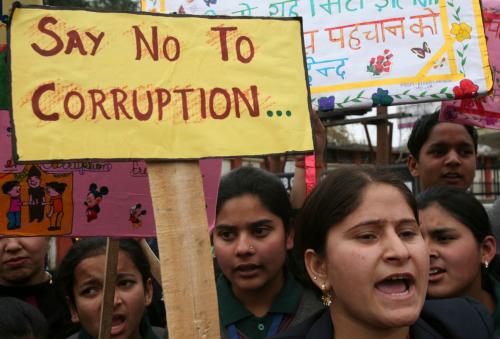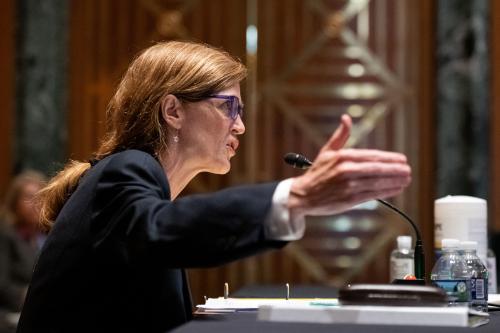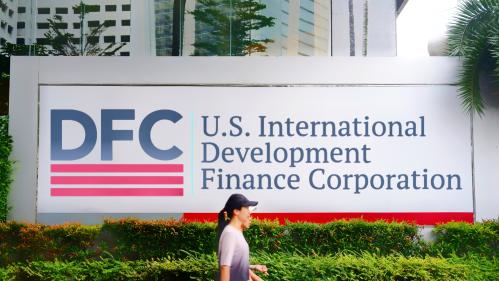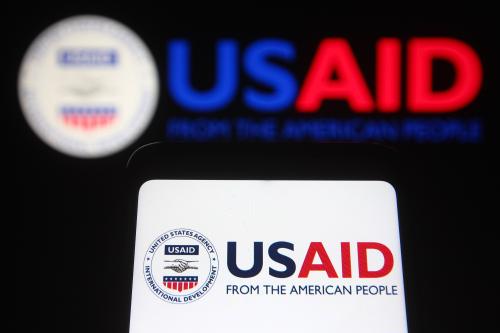It is not local organizations that lack the capacity to work with USAID. Instead, it is USAID that lacks the capacity in its operating systems and organizational culture to work with local organizations.
The Biden administration has made localization—generally defined as shifting contracts and grants from U.S. organizations to local non-governmental organizations (LNGOs)—a centerpiece of its foreign assistance policy. Just months into her role as USAID administrator, Samantha Power set up a working group to operationalize localization policy and announced targets to increase funding to LNGOs to at least twenty-five percent of USAID awards by the end of 2024. Following up on this commitment, in October 2022 USAID launched a new localization policy titled, “Strengthening Local Capacity In USAID Programming And Partnerships” to “guide USAID decisions about why and how to invest in the capacity of local partners to better achieve inclusive and locally-led development.”
As indicated by its title, the new policy rests upon an old trope that the major constraint for working with local organizations is their lack of capacity to effectively and accountably implement aid programs. Before local organizations can be full partners, the argument goes, it is first necessary to strengthen their organizational capacity (and who better to do this than USAID’s traditional international partners?). In fairness, in the immediate post-colonial period, many countries had fledgling public institutions. Civil society and the private sector were still nascent and, in some cases, suppressed. There were few post-secondary education institutions, and the pool of experienced professionals was small. But those days are long gone.
As conditions in lower-income countries have changed, so have the arguments about local capacity constraints. After generations of investment in education, technical training, and social infrastructure, no one now argues that developing countries lack talented people. Indeed, the ranks of development organizations are filled with highly qualified, deeply experienced local professionals who have grown up working in international development. In countries where the development industry has for decades provided a disproportionate share of professional opportunities, it is not surprising that it has attracted the best and brightest. The head of the U.S. President’s Emergency Plan for AIDS Relief (PEPFAR), the U.S. government’s largest foreign assistance program, who is originally from Cameroon, is but one prominent example.
No longer able to point to a lack of qualified people, excuses for not working with local organizations focused on administrative and financial accountability shortcomings. Local organizations might have technical expertise, but they lack the management and financial controls to account for funds and report on results. The history of foreign assistance is replete with examples of funds being misused, poorly accounted for, and outright stolen. However, it is disingenuous to ascribe the risks associated with financial management, controlling corruption, and accounting for results as unique to local organizations. One only has to look at the latest report from USAID’s inspector general for a “Who’s Who” of respected international organizations whose programs failed to meet their objectives and had millions of dollars of questioned and disallowed costs due to management mistakes, poor accounting, corruption, and theft. This is not because those organizations lack capacity, rather it is because development work is a high-risk endeavor. Believing the risks are inherently greater with local partners is a prejudice that needs to be discarded.
The most recent iteration of the capacity argument is that local organizations may be good at what they do, but they lack the sophisticated management systems to comply with the U.S. government’s voluminous requirements. USAID’s traditional partners have spent years—in many cases decades—and millions of dollars (reimbursed by their U.S. government awards) building the systems to comply with the “Code of Federal Regulations,” the “Federal Acquisition Regulations,” the “Office of Management and Budget’s Uniform Guidance,” and USAID’s own “Automated Directives System” that stipulate over 70 small-print pages of standard provisions, rules, and regulations.
It is this last argument that points to the real lack of capacity. If the U.S. government were truly determined to localize its programs it would create the administrative and management systems necessary to do so. Yet, this has not happened. In fact, looking at USAID’s funding obligations over the last two years two things stand out: First, funding to public international organizations such as U.N. agencies including UNICEF and the World Food Program—has increased nearly four-fold. This is understandable given the proliferation of humanitarian crises in recent years and the fact that PIO grants can be done quickly on a sole source basis. Second, most of USAID’s large U.S. partners saw stable or increased funding over the period 2018 to 2022. This is not what you would expect to see if localization was taking hold.
None of this should be interpreted as a lack of sincerity on USAID’s part. There is no doubt that Administrator Power wants to see more local solutions; it is just not something USAID has the capacity to do given its political, legal, and institutional constraints.
So, what can be done?
Achieving a more ambitious localization vision will remain out of reach until USAID builds the organizational capacity to work with local organizations. Three concrete actions that would accelerate the transition to local organizations and contribute to more equitable development are:
- Upgrade USAID’s Local Works into a full-fledged LNGO financing facility. This would have more in common with philanthropy than traditional bilateral programs, drawing on the methods and tools of charitable foundations and making greater use of operating support grants. A critical first step would be negotiating with partner governments the portion of USAID funds allocated for LNGO programs. While amounts would vary by country, this would create the structure and incentives to quickly reach the 25 percent target. (Remarkably, the localization discussion has barely acknowledged the equities of national governments. Not all partner governments will be enthusiastic about dividing the aid pie with LNGOs). To be viable at scale, a localization financing facility must have its own administrative practices and tools, much like the Office for Disaster Assistance has its own operating systems. USAID would need the United States Office of Management and Budget to issue new LNGO-specific grant award and management guidance.
- Pay local organizations more than the de minimus overhead rate. Most local organizations are limited to a 10 percent overhead rate while international partners earn 20 to 40 percent (in some cases more) through their negotiated indirect cost agreements. These rates and previous studies make clear that the costs of implementing U.S. government programs far exceed 10 percent. This reform would enable local organizations to hire the personnel and build management systems to comply with international standards and help level the playing field with international organizations. As a bureaucratic innovator, USAID should be able to devise an equitable way for local organizations to recover the full cost of doing business with the U.S. government.
- Build a risk management function in USAID missions. For decades USAID has outsourced most risk management to its international partners. Those IPs have built sophisticated compliance departments that use state-of-the-art techniques to manage program and financial risks. In contrast, few USAID staff know what a comprehensive Portfolio Risk Management function looks like. To truly localize its programs, USAID must build an in-house risk management function. This will require establishing independent compliance offices (just as INGOs have done) with staffing and a budget for robust monitoring and auditing. PEPFAR provides some examples of this type of work and the level of resources required.
To realize its localization policy USAID must build its own capacity to support locally-led development. Adopting the measures proposed here would change the power dynamics between USAID and local actors, opening new opportunities for LNGOs to be more resilient and look beyond USAID financing to more sustainable operating models. Only by adopting structural changes can USAID entrench the culture and practices needed to drive institutional change within a large government bureaucracy.







Commentary
Rethinking the constraints to localization of foreign aid
December 1, 2022